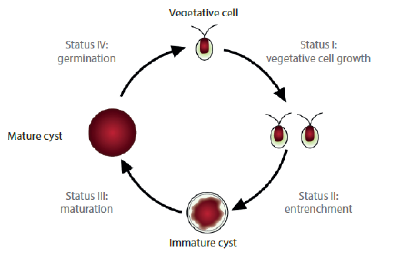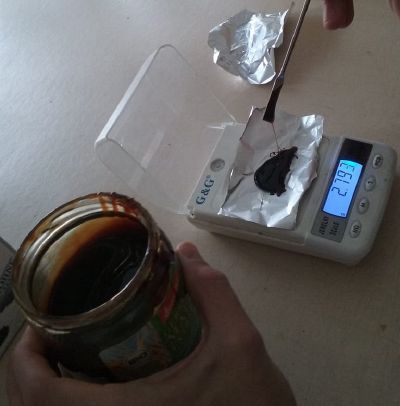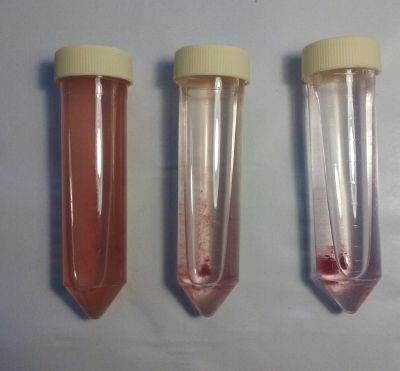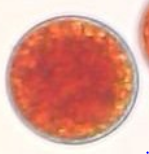CULTIVATION OF Haematococcus Pluvialis.
- Known by its red color, it's an alga that in stress conditions produces a high content of a strong antioxidant known as astaxanthin.
* SCIENTIFIC CLASIFICATION Division: Chlorophyta Class: Chlorophyceae Order: Chlamydomonadales Family: Haematococcaceae Genus: Haematococcus Species: H. pluvialis Binomial name Haematococcus pluvialis
https://en.wikipedia.org/wiki/Haematococcus_pluvialis

Sequence of growth states of the Haematococcus: https://comunicarciencia.bsm.upf.edu/?tag=haematococcus-pluvialis
- MEDIUM
- 100ml of water
- 3% of vinasse
- 0.7% of NaCl.
The pH is adjusted to 7.0. A 0.4 g/L quantity of inoculum can be used for the initial culture (cells in vegetative growth). The culture must be performed with 0.5 vvm air at 25°C, and until 15 days of culture.
Note: in the laboratory was no Vinasse, so another bioproduct of the sugar was used in order to prepare the medium Malz extract. (brennwert: 1.216kJ, fett 0.2g, kohlenhydrate 65g, Zucker 45g, Eiweiss 5g, Salz0.02g.)
- Day 1: Three samples were made all with the same concentration of salinity but with different percentage of vinasse, and with the same PH 7. Preparation and from left to right; original medium, 10% of original medium diluted in 100ml of water, 1% of original sample diluted in 100ml of water.
The three samples contain:
1 Sample 3,00g malz extract, 100ml water & 0,7g NACl. 2 Sample 0,30g malz extract, 100ml water & 0,7g NACl. 3 Sample 0,03g malz extract, 100ml water & 0,7g NACl.
- Day 2: An observation under the microscope is made in order to see the specimen.
- Day 4: After 4 days of growth the specimens:...



